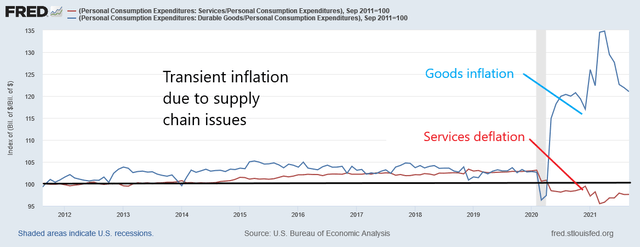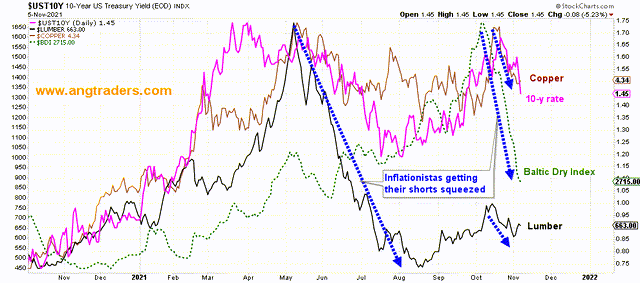Why Do We Get Better At Predicting The Weather, But Not The Market?
Weather and markets are both complex systems that humans endeavor to predict. It is fair to say that meteorologists are better able to predict weather now than they could back in 1940, but the same cannot be said about market predictions. We are no better, and perhaps worse, today at predicting markets than in the past. Why?
The more knowledge we have about the historical weather, the better and more accurate models we can build. Increased understanding of how the various components interact to create weather allows us to better predict the future. This is so obvious that it is almost trivial. However, when it comes to predicting the future of markets, a paradox arises; the more we know, the less we can predict.
As Yuval Harari points out in Homo Deus, “…as we accumulate more data and increase our computing power, events become wilder and more unexpected.” The reason for this paradox is the fact that the components of the market are conscious individuals who are themselves changed by the new knowledge. Here is Harari once again:
Imagine, for example, that one day experts decipher the basic laws of the economy. Once this happens, banks, governments, investors and costumers will begin to use this new knowledge to act in novel ways, and gain an edge over their competitors…..once people change the way they behave, the economic theories become obsolete. We may know how the economy functioned in the past—but we no longer understand how it functions in the present, not to mention the future.
That explains the old market adage, ‘if it is obvious, it is obviously wrong.’
An example of this involves the prediction of inflation that was made by most analysts during the early years of quantitative easing (QE) post-2008 (and again recently following the Covid shutdown). Loose monetary policies around the world had created trillions of dollars in an attempt to save the financial industry (and recently, to maintain demand during the Covid-crisis), so it was obvious to expect that inflation would appear alongside monetary expansion. Twelve-years later, however, there was still no inflation to speak of (and today's inflation is a direct result of supply-chain disruptions...not the monetary or fiscal response). The obvious was obviously wrong. Some things really are ‘different this time.’
The chart below shows how inflation was modest from 2011 to 2020, and that following the Covid shutdown there was deflation in services, while goods inflated due to supply disruptions. Note that the goods inflation has been rapidly declining as supply issues are dealt with.

Source: FRED, ANG Traders
One-by-one, the inflation pressure coming from shortages in lumber, shipping, and copper are being relieved and reflected in the 10y bond rate (chart below).

Source: ANG Traders, stockcharts.com
In the case of weather, however, the causal components are not conscious individuals and are, therefore, not changed by the increased knowledge. That is the crucial difference. The more that is collectively known about the market--by the market--the more complex the market itself becomes. The more complex a system is, the less predictable it is.
For this reason, we have always asked ourselves ‘what is constant about the conscious individuals who make up the market?’ The answer is emotion, and money. Specifically, fear and greed (fear of missing out), and the money creation that comes from the Treasury and from bank credit. That is why we track Treasury net-spending and bank credit creation, along with sentiment in a variety of different ways.
Another old market adage—no two markets are alike, but markets do rhyme—reflects the constancy of these emotions. The ‘rhyming’ in the markets can be visualized in the repetitive patterns of the myriad of indicators and averages available to us. No pattern repeats with 100% fidelity, but the closer the pattern is related to emotion or the flow of funds, the higher the probability it will repeat.
The question to be asking at this point is: What about the machine-learning algorithms? We know they have no consciousness and, therefore, no emotions. And we also know that these emotionless machines are responsible for most of the trading that makes up the market. Since a majority of its causal components are not emotional, should not the market become more “weather-like” and predictable?
As it turns out, the market continues to be as emotional as ever. We think the reason for this lies in the fact that the algorithms themselves are learning how to trade by studying historical trading patterns. These patterns, in turn, were created by emotional human traders, so it is reasonable to expect the machines to trade like their teachers—like emotional human traders—only many times faster.
It turns out, that emotions and fund flows continue to be the only constants we can find in an increasingly complex market—even one composed mostly of AI entities. Fear and greed, and money reign supreme--even among the machines. There is plenty of fear, and healthy fund flows that will continue to drive the market over the next 6-12 months. Investors can profit from this by simply buying broad-spectrum ETFs like SPY, DIA, and IWM.



